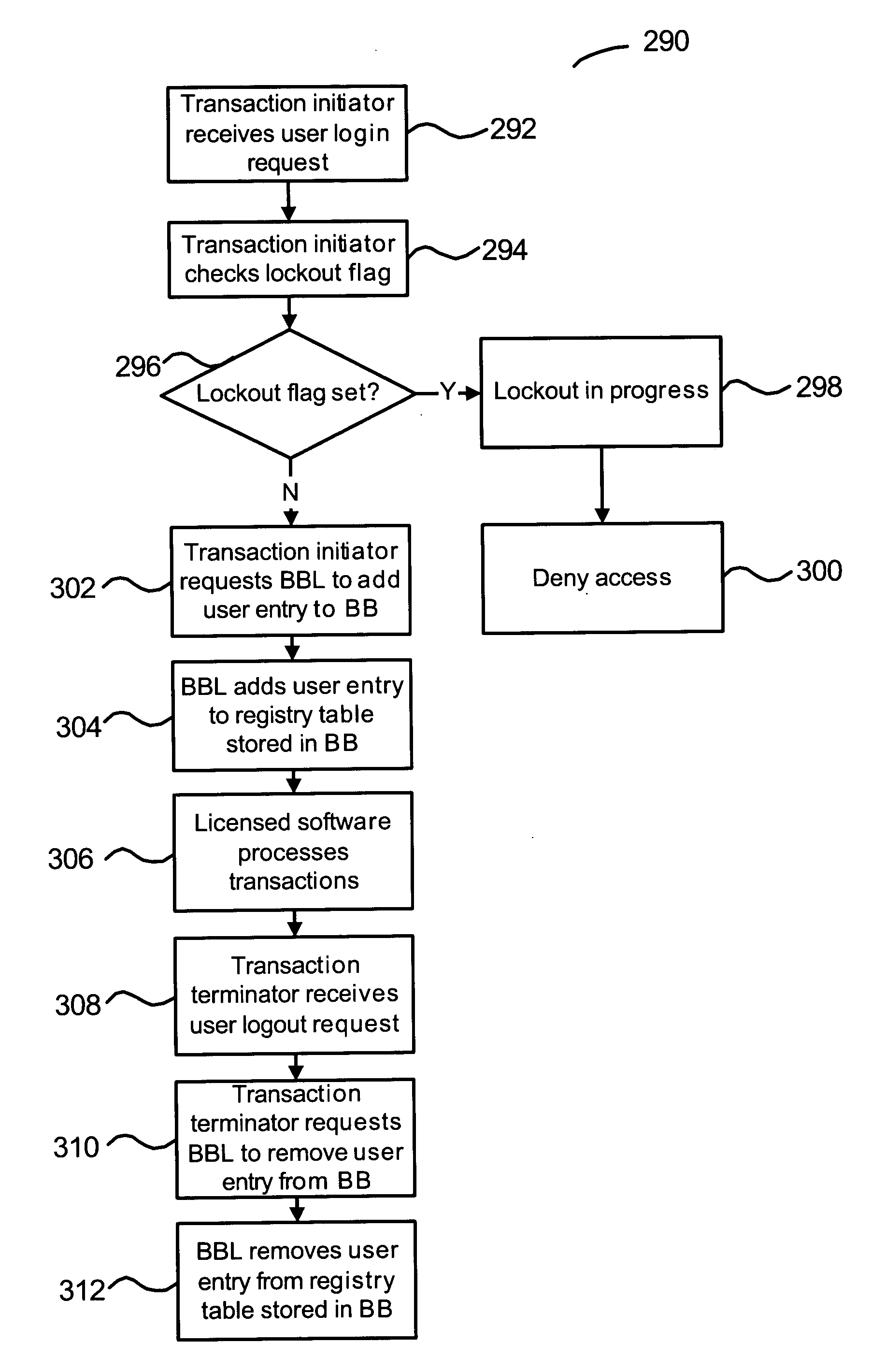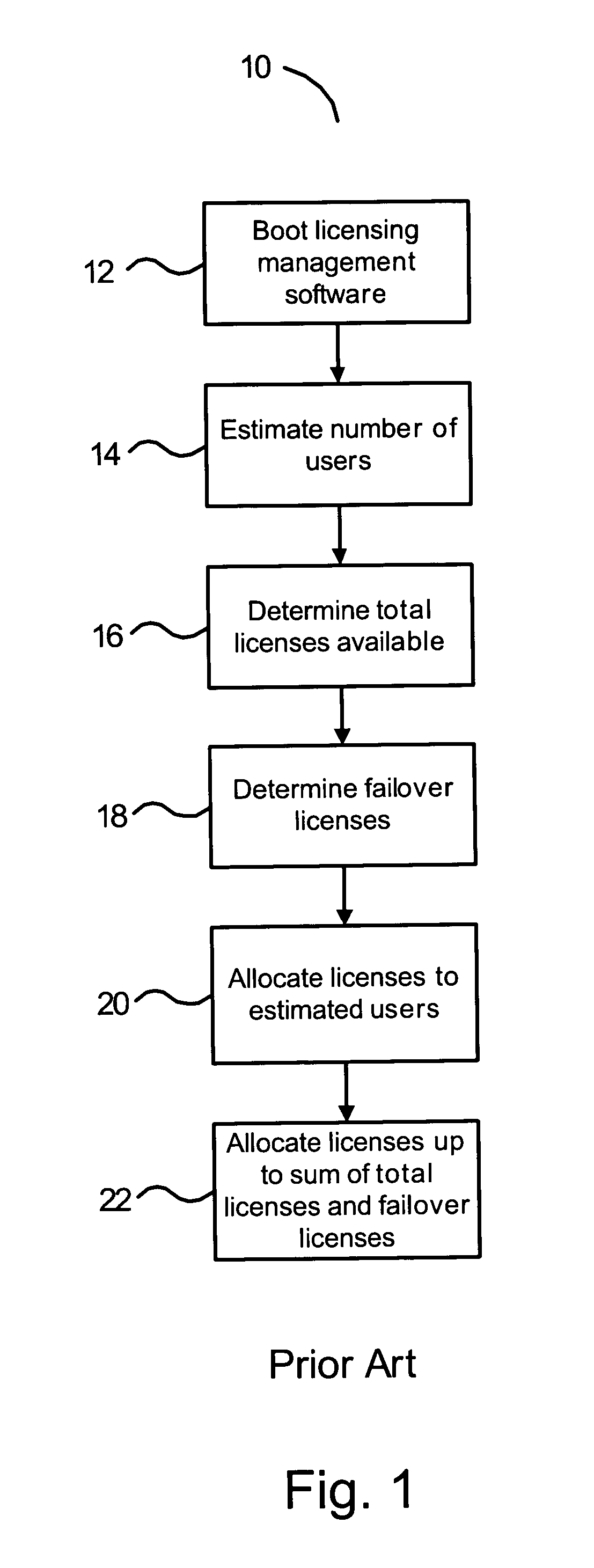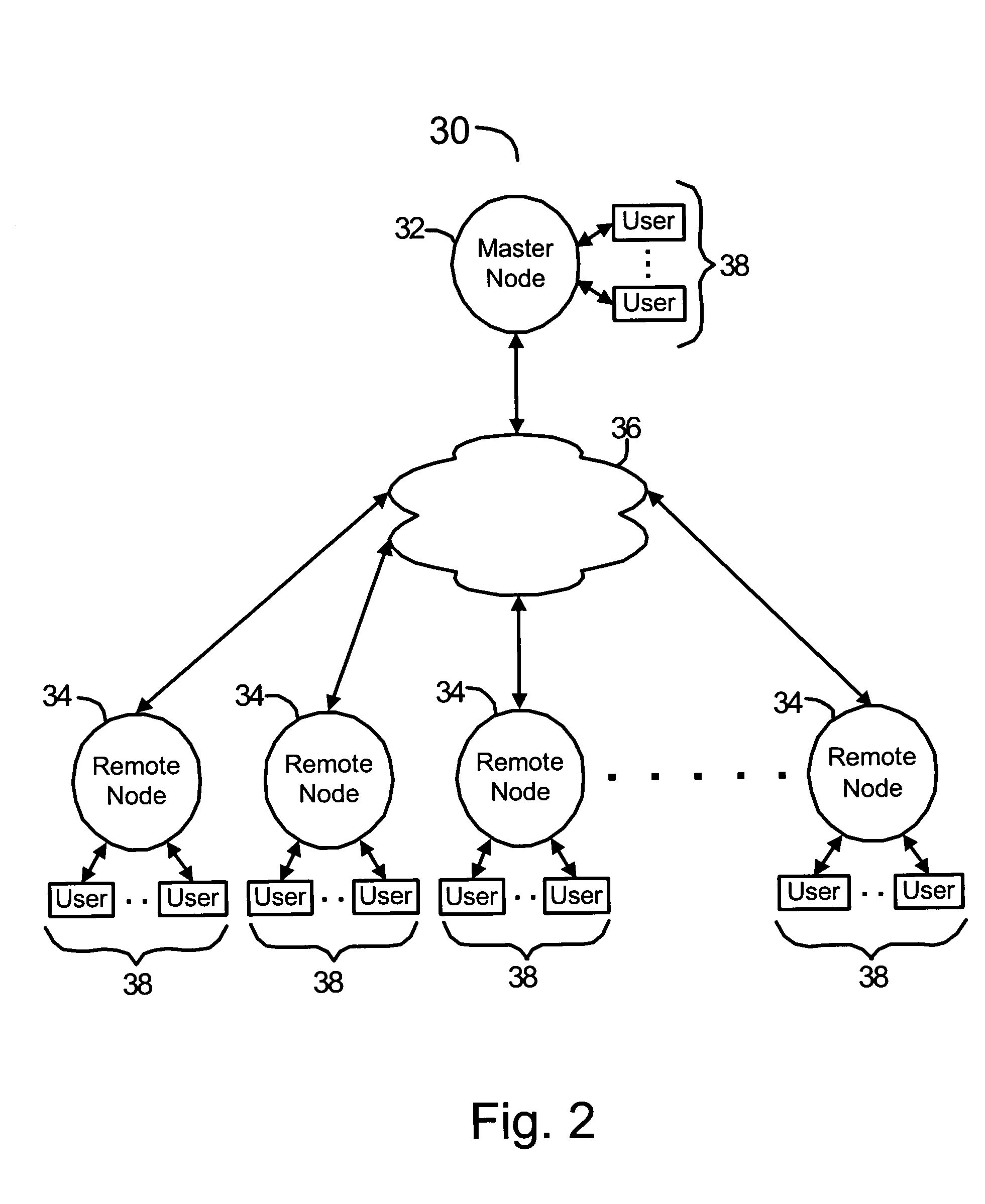Distributed run-time licensing
a software license and run-time technology, applied in the field of software licensing technology, can solve the problems of prohibitively expensive for administrators to provide unlimited software licenses, limit the number of simultaneous users, and limit the number of users, and achieve the effect of reducing the amount of processing overhead on the network
- Summary
- Abstract
- Description
- Claims
- Application Information
AI Technical Summary
Benefits of technology
Problems solved by technology
Method used
Image
Examples
Embodiment Construction
[0032]FIG. 2 provides a block diagram 30 of a distributed computer network system comprising multiple nodes which can be used in accordance with the present invention. A plurality of nodes 32 and 34 are coupled to network 36. In one embodiment, a node is designated the master node 32. The remaining nodes are designated remote nodes 34. All nodes are in data communication with the other nodes of the network through communication software known in the art. Nodes 32 and 34 can be coupled to the network using any networking hardware known in the art. This hardware can include, but is not limited to: bridges, routers, hubs, or other hardware. Network communication can take place over any combination of electrical, optical, wireless, or other mediums.
[0033] Although a plurality of nodes 32 and 34 are illustrated in FIG. 2, the present invention can be scaled for use with computing environments having any number of nodes in any desired distribution. In one embodiment, the present inventio...
PUM
 Login to View More
Login to View More Abstract
Description
Claims
Application Information
 Login to View More
Login to View More - R&D
- Intellectual Property
- Life Sciences
- Materials
- Tech Scout
- Unparalleled Data Quality
- Higher Quality Content
- 60% Fewer Hallucinations
Browse by: Latest US Patents, China's latest patents, Technical Efficacy Thesaurus, Application Domain, Technology Topic, Popular Technical Reports.
© 2025 PatSnap. All rights reserved.Legal|Privacy policy|Modern Slavery Act Transparency Statement|Sitemap|About US| Contact US: help@patsnap.com



